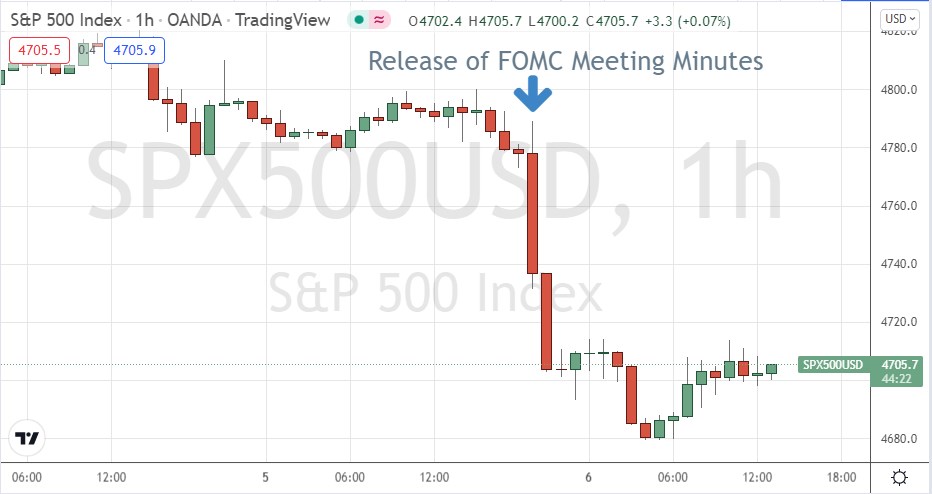FOMC Meeting Minutes Release More Hawkish Than Expected
Yesterday, the US Federal Reserve’s FOMC released the minutes of its recent policy meeting. The minutes expose no new decisions but do reveal important insight into the thinking of members which impacts the market’s expectations for forthcoming policy moves throughout 2022 and beyond.
The aspects of the minutes which interested market analysts were:
Removing the term “transitory” from language discussing inflation. This seems to indicate that the FOMC is now taking inflation as a more serious and long-term problem. The annualized US inflation rate is currently showing an increase of 6.8%, which is the highest rate recorded since 1982.
The Federal Reserve’s balance sheet may be shrunk at a faster pace than was employed in the last shrinking cycle.
The background to these minutes is that the FOMC at its last meeting announced a decision to double the pace of tapering its asset purchase program, which would be expected to be wrapped up fully in March 2022, at which point a series of quarter-point interest rate hikes would likely begin. These two elements in the minutes make this hawkish tilt even stronger.
A US rate hike in March 2022 is now looking very likely to happen, with many analysts estimating a 70% chance this will happen.
Market Reaction to November FOMC Meeting Minutes
Stock markets were hit by the more hawkish tilt. In the US, The S&P 500 Index fell by almost one hundred points and looks set to open today (Thursday) below yesterday’s closing price. The NASDAQ 100 technology Index fell even harder and is trading more bearishly off hours before its official market open. The tech sector had already been suffering from weakness, and the NASDAQ 100 is now close to its 2-month low price at 15510. Non-US markets have also been selling off, especially in Asia.
S&P 500 Index Hourly Price Chart
In the Forex market, the most notable shift following the release of the meeting minutes was a new strength in the Japanese yen, although logically the USD should have gotten a boost from the more hawkish tilt, which it did. The yen strengthened as the major safe-haven currency due to the worsening of risk sentiment, which is also why the Australian dollar and other risky currencies have lost value since the release.
Looking at the commodities asset class, the picture is mixed. Precious metals such as gold and silver have fallen quite firmly, with silver looking especially weak over the long term. However, energies such as WTI Crude Oil have continued to advance quite strongly.
Cryptocurrencies had been broadly weak for several days and the FOMC minutes release made them even weaker. This is not surprising as cryptocurrencies tend to fall in value when markets are dominated by risk-off sentiment.
What Does This Mean for Traders?
Since it started to be obvious that the omicron coronavirus variant was not likely to overwhelm health systems, and that vaccines still offered excellent protection against severe coronavirus disease, markets were taking a risk-on attitude, which saw stocks advance and riskier commodities rise firmly against the Japanese yen. The US dollar was already established in a long-term bullish trend so always kept residual bullishness.
The FOMC release yesterday seems to have changed this situation, with risk-off sentiment now dominant. This has been most clearly expressed in bearish action in stocks and the Australian dollar, and bullishness on the Japanese yen.
Whether this will continue is an open question. This Friday’s non-farm payrolls data release may be more important than usual, as a very strong number may make a March US rate hike even more likely.
Traders may be wise to make small, short-term risk off trades over the rest of the Thursday, then wait for Friday’s NFP release for clearer market direction.


